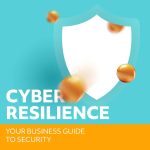Cyber Awareness: Leadership’s Role in Building a Secure Culture
What if a single click could cost your business thousands?
Even with reliable antivirus software and strong firewalls, one wrong move such as an employee clicking on a phishing link can undo all your technical defences. That single mistake could open the door to data theft, ransomware, and severe business disruption.
It is a worrying thought, but it does not have to be your reality.
Building strong cyber awareness across your organisation starts from the top. Your leadership team plays a key role in shaping how employees think and act about cybersecurity. When your leaders actively promote awareness, employees follow their lead. When they do not, awareness fades and risk increases.
This article explains why leadership involvement is vital, how to build a cyber-aware culture, and what steps can make your business more resilient against modern cyber threats in New Zealand.
Why Cyber Awareness Starts with Leadership
Many organisations believe cybersecurity is solely an IT responsibility. The truth is, your employees are your first line of defence. They handle customer information, open emails, and access systems daily. Their behaviour determines whether your business stays secure.
Leadership influences how seriously teams treat cybersecurity. When leaders make cyber awareness a shared priority, employees are more engaged, alert, and compliant with secure practices.
A culture of cyber awareness does not happen automatically. It develops through consistent communication, visible commitment, and ongoing leadership involvement. When employees see leaders modelling secure behaviour, it signals that security matters to the entire organisation.
The Real Impact of Leadership on Security Culture
Research shows that most data breaches occur due to human error. This does not mean employees are careless. It often means they lack support, guidance, or clear expectations from leadership.
When business leaders take cybersecurity seriously:
-
Awareness becomes part of everyday work rather than an occasional reminder.
-
Employees feel responsible for protecting company data.
-
Teams report suspicious activity early.
-
Training becomes meaningful instead of a simple compliance task.
Leadership commitment turns cybersecurity from a technical task into a shared organisational value.
Why Employee Cyber Awareness Training Matters
Think of your employees as digital gatekeepers. They have access to systems, data, and client communications. However, without proper training, even well-intentioned staff can make costly mistakes.
Regular awareness training helps employees understand the threats they face and gives them the skills to respond effectively.
Spot and Avoid Phishing Attacks
Phishing remains one of the most common causes of cyber incidents in New Zealand. With training, employees can recognise signs of phishing emails such as:
-
Unusual sender addresses
-
Poor grammar or suspicious requests
-
Unexpected attachments or links
Recognising these warning signs prevents attackers from gaining access to sensitive information.
(For more on this topic, visit Phishing Scams.)
Practice Good Password Habits
Weak or reused passwords create serious vulnerabilities. Awareness training teaches employees how to create strong, unique passwords and manage them safely.
Encouraging the use of a Password Manager makes it easier for staff to maintain secure logins without relying on memory.
Recognise Social Engineering Tactics
Social engineering relies on manipulation and trust. Cybercriminals may impersonate managers or partners to gain information or access.
Training helps employees question unexpected requests, verify identities, and pause before acting on instructions involving sensitive data or payments.
Handle Data Securely
Employees manage large amounts of information every day. Training teaches them how to handle data responsibly using encryption, secure sharing tools, and proper disposal methods.
This reduces the risk of data loss or leaks. Learn more in our guide to Data Security.
Report Suspicious Activity Early
Cybersecurity works best when everyone contributes. Employees should know how to recognise and report unusual activity such as login alerts, software pop-ups, or strange requests.
When incidents are reported quickly, small issues can be contained before they become serious.
How Leadership Builds a Cyber-Aware Workplace
A strong security culture depends on consistent leadership action. Cyber awareness cannot be developed through one training session or a single policy document. It requires an ongoing focus on communication, accountability, and collaboration.
Here is how leadership can strengthen awareness and reduce risk.
1. Communicate Clearly and Often
Cybersecurity should be part of normal business conversations. Use simple language to explain your security policies, why they exist, and how each employee contributes.
Share short reminders during meetings, send regular updates, and make sure everyone understands what to do when something seems unusual.
2. Lead by Example
Leaders should demonstrate the same secure habits they expect from others.
This includes using multi-factor authentication, locking screens when away from a desk, and completing cybersecurity training.
Employees are more likely to follow rules when they see their leaders doing the same.
3. Empower Employees
Cybersecurity can feel complicated. Provide tools and support that make it easier for employees to act securely.
This could include password managers, secure collaboration platforms, and simple incident reporting systems.
Working with a trusted provider through Managed IT Services ensures your systems and staff receive the right level of support.
4. Make Training Continuous
Cyber threats evolve constantly, and training should keep pace.
Avoid treating it as a once-a-year exercise. Offer regular updates, refresher sessions, and quick exercises to keep staff aware of the latest risks.
Continuous learning keeps cybersecurity relevant and top of mind.
5. Reward Positive Behaviour
Recognise employees who identify phishing attempts or suggest security improvements.
Acknowledging good habits encourages participation and helps create a workplace where security is everyone’s responsibility.
6. Encourage Open Communication
Employees should feel comfortable discussing cybersecurity concerns or reporting mistakes.
A supportive environment builds confidence and ensures incidents are handled quickly before they escalate.
Leaders must create a culture where speaking up about security is encouraged, not avoided.
7. Integrate Security into Business Strategy
Cybersecurity should not be treated as a technical afterthought. It should be part of leadership planning, budgeting, and performance discussions.
Aligning security with business goals strengthens both operational efficiency and long-term resilience.
Collaborating with specialists through IT Consulting helps integrate cybersecurity into your wider business strategy.
The Cost of Ignoring Awareness
Failing to build cyber awareness can have serious financial and operational consequences.
A single cyber incident can lead to data loss, downtime, compliance issues, and long-term reputational damage.
For small and medium-sized businesses in New Zealand, these costs can be devastating.
According to recent industry research, the average cost of a data breach continues to rise each year. Beyond financial losses, the impact on customer trust and employee morale can be even greater.
Investing in cybersecurity awareness and leadership engagement is far more cost-effective than recovering from an attack. It also positions your business to adapt quickly to new technologies and evolving threats.
Building a Cyber-Resilient Future
A cyber-aware organisation is one where every employee understands their role in protecting business data.
It takes time, consistency, and leadership commitment to achieve this, but the results are worth it.
Start by assessing your current policies, identifying training gaps, and encouraging collaboration between departments.
If you are unsure where to start, partnering with a trusted provider like Exodesk gives you access to tailored solutions and expert guidance.
We can help you:
-
Create practical, engaging cyber awareness programmes
-
Strengthen your technical safeguards
-
Update and simplify your policies
-
Foster a security-first culture across your team
When leaders commit to cybersecurity, employees gain confidence, awareness, and the ability to respond effectively to new threats.
FAQs: Leadership and Cyber Awareness
1. What is cyber awareness?
Cyber awareness is understanding potential online threats and knowing how to protect data, systems, and devices from attack.
2. Why is leadership important in cyber awareness?
Leaders influence culture. When leadership promotes cybersecurity, employees are more likely to adopt secure habits and take responsibility for protecting information.
3. How often should cyber awareness training be done?
Training should take place at least quarterly, with short refreshers after major incidents or technology changes. Regular sessions help keep employees alert.
4. What are signs of poor cyber awareness?
Common examples include weak passwords, ignoring software updates, sharing data through unsecured channels, or failing to report suspicious activity.
5. How can small businesses afford regular training?
Managed IT partners such as Exodesk offer affordable and scalable awareness training that fits your team and budget, helping you stay secure without major internal costs.
Final Thoughts
Cybersecurity is not only a technical issue. It is a leadership responsibility.
Your actions, communication, and priorities influence how your team views and practises online safety. When awareness becomes part of your culture, your business becomes stronger, more confident, and better protected.
Now is the time to act.
Contact us today to discuss how we can help your business or connect with us on LinkedIn to stay updated with more insights.


